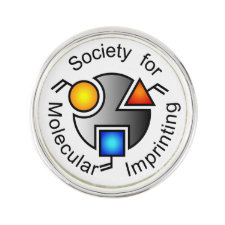
Authors: Xie Y, Chen DJ, Zhao JW, Peng Y, Jiang N, Zhou XM, Du SH, Zhang ZP
Article Title: An efficient hybrid design to prepare highly dense imprinted layer-coated silica particles for selective uptake of trace metsulfuron-methyl from complicated matrices.
Publication date: 2012
Journal: RSC Advances
Volume: 2
Issue: (1)
Page numbers: 273-283.
DOI: 10.1039/C1RA00438G
Abstract: This work presents an approach called "hybrid design" which combines "grafting from" and "grafting through" methods, in order to prepare highly dense imprinted layer-coated silica particles for improved binding capacity to metsulfuron-methyl (MSM). The imprinted conditions including the kind of solvent and molar ratio of template to functional monomer were carefully optimized by quantum mechanics method. The obtained imprinted materials were evaluated by transmission electron microscopy and rebinding experiments, exhibiting well-controlled shell thickness (up to ~30 nm) and high binding affinity to MSM. Moreover, the rebinding amount of MSM-imprinted particles to MSM was nearly 1.6- and 1.4-folds that of normal surface-imprinted particles, respectively. When the MSM-imprinted particles were used as dispersive solid-phase extraction materials, the recoveries (RSDs) of MSM determined by high-performance liquid chromatography (HPLC) were 93.4% (1.5%), 86.8% (3.2%) and 88.4% (2.7%) in the spiked water, soil and wheat samples, respectively. Therefore, the method will provide new opportunities for enrichment and detection of trace MSM from complicated matrices.
Template and target information: metsulfuron-methyl, MSM



Join the Society for Molecular Imprinting

New items RSS feed
Sign-up for e-mail updates:
Choose between receiving an occasional newsletter or more frequent e-mail alerts.
Click here to go to the sign-up page.
Is your name elemental or peptidic? Enter your name and find out by clicking either of the buttons below!
Other products you may like:
 MIPdatabase
MIPdatabase









